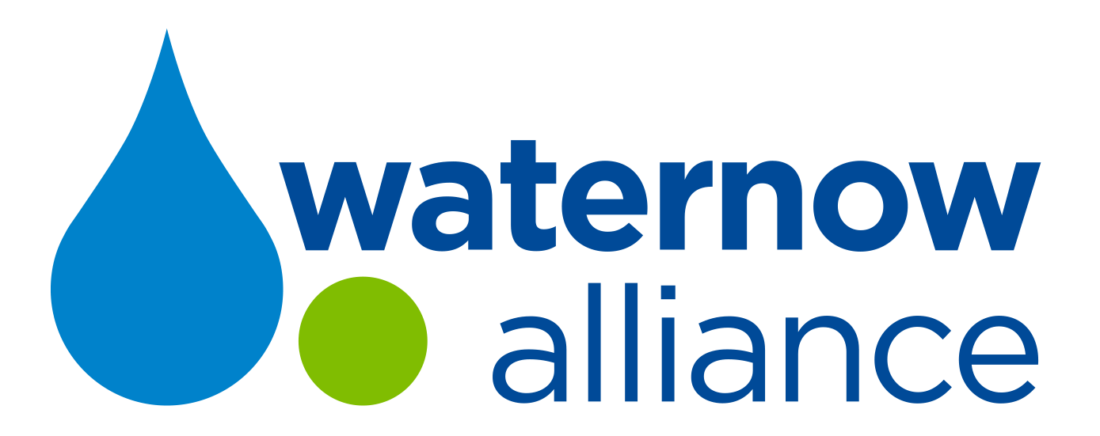 From the Executive Director,
From the Executive Director,
Cynthia Koehler:
Public water utilities, particularly larger ones, are expert in financing water infrastructure. To build treatment facilities, pump stations, pipelines or reservoirs, they float low-cost municipal bonds, which generate significant proceeds, to cover capital costs. Debt financing allows them to amortize these large upfront outlays over long periods of time, often 20 or 30 years or more.
In other words, access to capital makes it possible for public utilities to make the large-scale expenditures necessary to invest in big-ticket items without rate shock or otherwise damaging their fiscal health. The significance of the recent GASB guidance that I wrote about last week is that utilities are now positioned to make big-ticket investments in a far wider range of innovative water management solutions and strategies.
So how does this work? Although it violates The Basic Law of Blogs to get too deep in the weeds, in a nutshell, the new GASB guidance connects the dots from their existing Standard 62 (“GASB 62”) to water use efficiency and other distributed water infrastructure programs. GASB 62 governs something called “regulatory assets,” an accounting convention that GASB developed about a decade ago to acknowledge that public entities engage in various “business-type activities” that can provide long-term benefits, but do not result in traditional fixed assets. The benefit to public entities of being able to label investments as “assets” is that they can be debt-financed; annual expenses cannot.
So GASB came up with the idea of allowing public entities to book expenditures for these “business-type activities” as assets – allowing them to be debt-financed and amortized over time. The key criterion is that the public entity must have a governing board (the “regulator”) capable of setting rates that can and will fully repay the cost of the investment.
Side Note: This accounting verbiage can be a challenge for the water industry that typically thinks of a “regulator” as a separate agency that issues permits, sets rules or oversees utility operations in some way. For GASB 62 purposes, the “regulator” can be the utility’s own governing board, whether a city council, appointed commission or elected members of a water district board.
Boiled down, accounting for “regulatory assets” is a complete alternative to typical accounting conventions for determining what is and is not an asset. Under GASB 62, the ability to recover the cost through rates creates the asset, not whatever the utility has spent its money on. This is ideal for public water utilities seeking to stretch supplies, better manage stormwater or address other water issues by scaling up their spending on rebates and other programs dispersed over many properties.
And this is where the new GASB guidance comes in. It states that public utilities are indeed authorized to book conservation program costs, including consumer rebates, as “regulatory assets.” Since virtually all public water utilities are governed by councils and boards with rate setting authority, they will generally be eligible to take advantage of this path. They simply must be willing to promise, as they do currently when borrowing funds, that their spending will be guaranteed by future rate streams.
If I have not lost you after 500+ words on accounting, here’s an example to bring this home. Let’s say your water utility has a $70 million budget, and would like to invest $10 million in a major turf to xeriscape program touching 4,000 homes. You’d like to implement the program in 1-2 years, and reap various benefits over the next 10-20 years.
You could pay for the program out of annual operating cash, but that would require a 14% rate increase, a significant hardship for most communities. Or, you could debt-finance exactly the same program at the same level and gain the same water, energy and other savings. But you would have 20 years to repay the $10 million and would need to raise rates only by 1%.
Let's face it, GASB pronouncements are not sexy stuff. Even so, the new GASB 62 guidance opens the door to major new public investments in water tech and innovation, distributed and decentralized strategies that offer real promise; strategies that are not only effective but among the least expensive options for communities and ratepayers.
This is exactly why WaterNow Alliance, our team of bond attorneys, financial experts and NGO partners have sought this guidance on behalf of water utilities nationwide. It may be wonky and even geeky, but it can connect the dots between the infrastructure of the past to the water infrastructure of the future, opening up a world of opportunity for everyone.
This post is the third of a 3-part series on the recent GASB Implementation Guide. You can read part one here and part two here.

